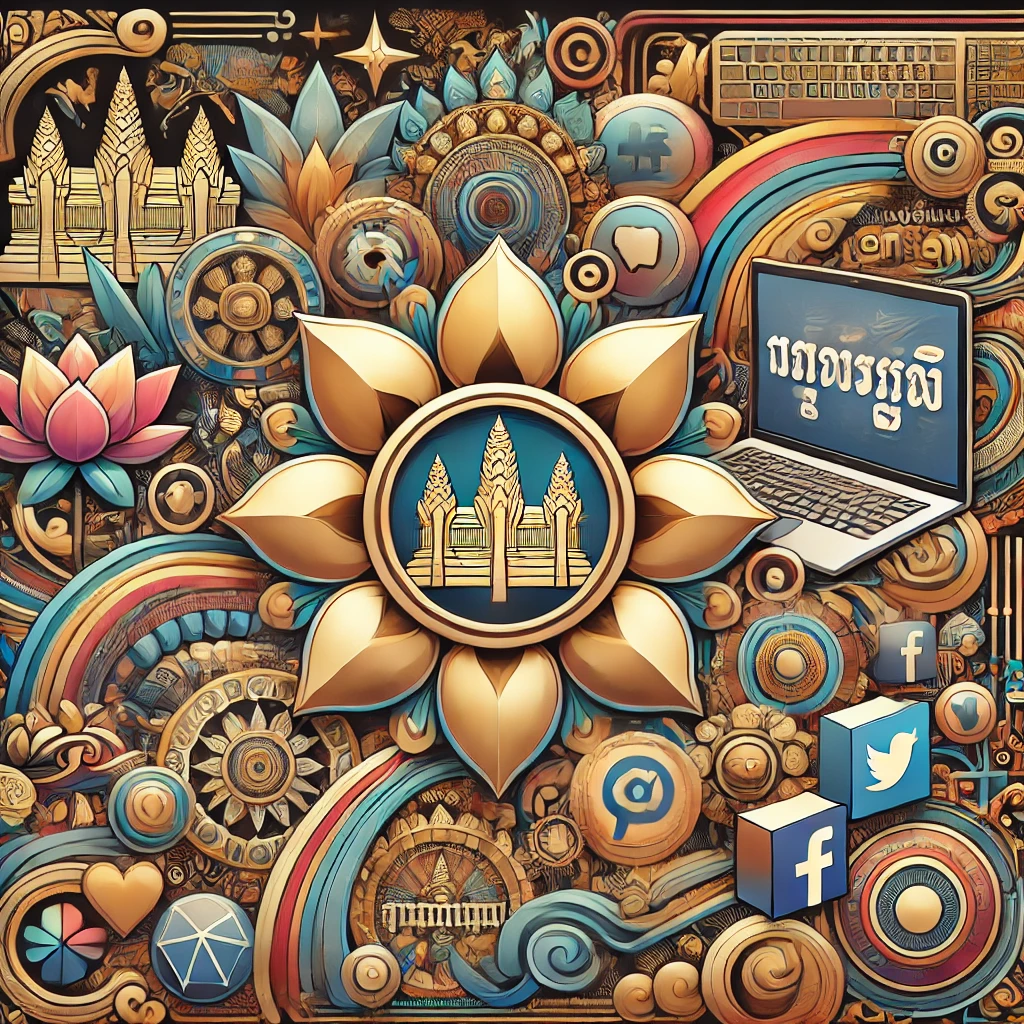Introduction
Spoken by over 17 million people, Khmer (ភាសាខ្មែរ – Pheasa Khmae) is the official language of Cambodia and the oldest recorded language of the Mon-Khmer family still in use. It serves not only as a means of communication but also as a vessel for cultural identity, religious expression, and national pride. Understanding the Khmer language’s historical development reveals a profound story of adaptation, influence, and preservation.
1. The Origins of the Khmer Language
Khmer belongs to the Austroasiatic language family, which also includes Vietnamese and Mon. Its roots trace back thousands of years, with early forms likely spoken by the proto-Mon-Khmer peoples who settled in the lower Mekong region.
Early influences include:
- Indigenous Mon-Khmer roots, shared with ethnic groups in Thailand, Laos, and Vietnam.
- Ancient trade and contact with India and China, bringing both linguistic and cultural exchanges.
2. The Evolution of Khmer: From Ancient to Modern
The history of the Khmer language can be categorized into three key stages:
Old Khmer (7th – 13th Century)
- Found primarily in stone inscriptions from the pre-Angkorian and Angkorian periods.
- Used in administration, religion, and temple dedications.
- Sanskrit and Old Khmer were often mixed, especially in royal and religious texts.
Middle Khmer (14th – 18th Century)
- Marked by phonological changes (loss of final consonants, vowel shifts).
- Emergence of more vernacular expressions and simplified grammar.
- Influences from Thai and Lao due to regional interactions and Siamese dominance.
Modern Khmer (19th Century – Present)
- Stabilized grammar and vocabulary.
- Introduction of new words due to French colonialism, modern technology, and globalization.
- Modern Khmer is used in government, education, media, and literature.
3. The Influence of Sanskrit and Pali
Sanskrit and Pali, sacred languages of Hinduism and Buddhism, have profoundly impacted Khmer:
- Sanskrit was introduced via Indian Brahmanism and early Hindu rulers.
- Pali, the language of Theravāda Buddhism, enriched Khmer’s religious vocabulary.
- Many Khmer terms for philosophy, ethics, ritual, and government originate from these sources.
Examples:
- Dhammayutika Nikaya (Buddhist sect)
- Preah (sacred/honorific, from Sanskrit Preṣa)
- Paññā (wisdom, from Pali)
4. Khmer vs. Neighboring Languages
Khmer is linguistically distinct from its neighbors:
| Feature | Khmer | Thai/Lao | Vietnamese |
|---|---|---|---|
| Language family | Austroasiatic (Mon-Khmer) | Tai-Kadai | Austroasiatic (but non-Khmer) |
| Script origin | Indian Brahmi | Indic via Khmer | Latin (modern), formerly Chinese Chữ Nôm |
| Tonal system | Non-tonal | Tonal | Tonal |
| Word spacing | No spaces between words | Uses spaces | Uses spaces |
| Influence | Sanskrit, Pali, French | Khmer, Sanskrit, Chinese | Chinese, French |
Despite sharing vocabulary and script forms, Khmer is not mutually intelligible with Thai, Lao, or Vietnamese.
5. Colonial Impact: French and the Khmer Language
Under French colonial rule (1863–1953), the Khmer language underwent substantial vocabulary expansion:
- Borrowed terms for technology, administration, education, and law.
- Example: sala (school) from French salle (room), stasyon (station), ministere, garaj.
- French influence also modernized printing, dictionary writing, and standard education.
- However, there was tension between Khmer nationalists and the imposition of French linguistic norms.
6. Standardization and Modernization Efforts
Efforts to standardize and promote the Khmer language include:
- Royal Academy of Cambodia: Plays a central role in developing Khmer grammar, dictionaries, and orthography.
- Unicode encoding: Allowed Khmer script to flourish online.
- Media and education: National TV, radio, and schools use standardized Khmer, especially in urban areas.
- Challenges: Informal speech, dialectical variations, and the increasing influence of English in youth culture and tech environments.
Conclusion
The Khmer language is a testament to Cambodia’s resilience, spiritual depth, and evolving identity. From ancient Sanskrit-laden inscriptions at Angkor to digital communication in Khmer Unicode, it has survived colonization, war, and modernization. Today, Khmer continues to adapt, serving as both a symbol of unity and a cornerstone of Cambodia’s cultural heritage.





